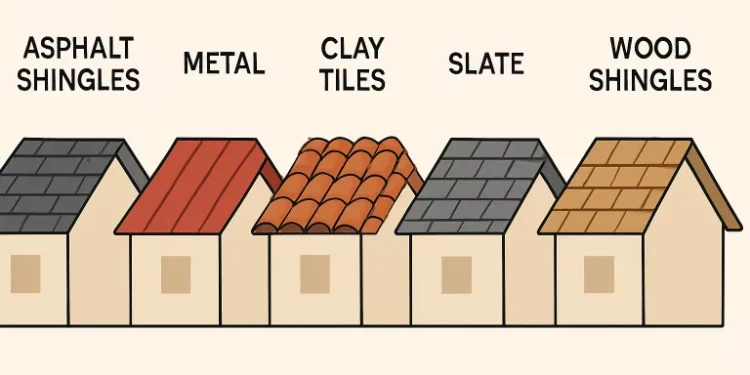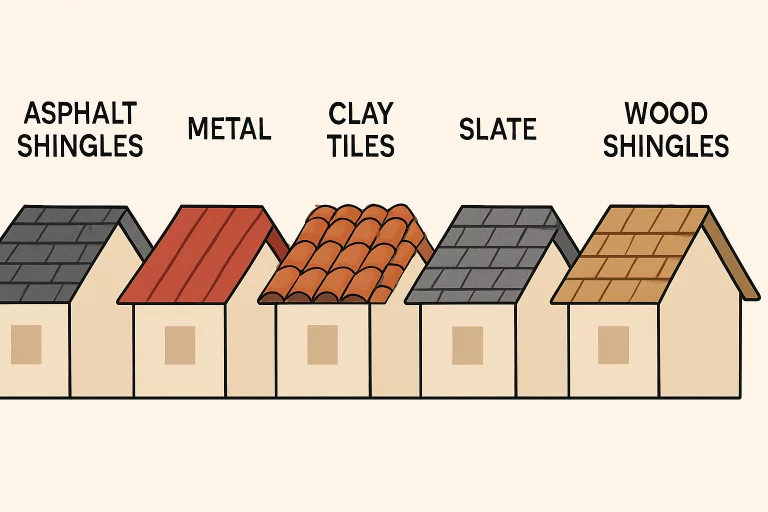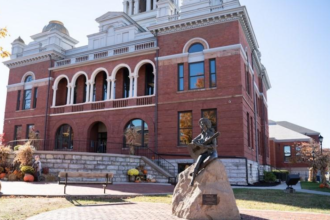Choosing the Right Roofing Material for Longevity and Performance

Table of Contents
Introduction
Deciding on the best roofing material for your home is one of the most critical investments you will ever make for your property. Your roof is your first defense against the elements, and the type of material you choose impacts curb appeal and property value and determines how well your home will be protected over time. Because roofing is a complex system, enlisting the help of an experienced roof replacement contractor is an essential step in ensuring your new roof is correctly selected and expertly installed. When exploring the variety of roofs on the market, you’ll want to weigh factors such as overall durability, routine maintenance, regional climate compatibility, and long-term value. The right choice can mean decades of reliable shelter, lower energy bills, and fewer worries about unexpected repairs.
Homeowners are overwhelmed by the numerous roofing options, including asphalt shingles, metal, slate, and eco-friendly tiles. This guide provides an overview of these materials, their expected lifespans, and unique factors affecting their performance. It also offers maintenance tips to maximize investment and ensure a long-lasting roof, potentially saving homeowners thousands over their home’s lifetime.
Asphalt Shingles
Asphalt shingles are North America’s most widely selected roofing material, recognized for striking an attractive balance between price, availability, and performance. These shingles can suit various architectural styles and budgets offered in two primary categories—three-tab and architectural. Three-tab shingles deliver a flat, uniform appearance, making them a go-to option for those prioritizing initial cost. Typically, their lifespan ranges from 15 to 20 years. In contrast, architectural shingles are engineered with extra thickness and a layered, dimensional design. This offers improved aesthetics and can extend the roof’s longevity up to 30 years. It is essential to understand that while asphalt is flexible and relatively straightforward to install, its lifespan can be cut short by harsh weather fluctuations, severe wind, or improper installation. That’s why selecting a trustworthy roof replacement contractor is essential for ensuring the best results and getting the most from your investment.
Metal Roofing
Once mainly seen on commercial and industrial buildings, metal roofing has become an increasingly popular option for residential homes, thanks to its remarkable durability, minimal maintenance, and contemporary curb appeal. When expertly installed, a metal roof can last anywhere from 40 to 70 years, standing up to the harshest environmental conditions while maintaining its structural integrity. Metal roofs resist damage from hail, fire, high winds, and invasive pests. Furthermore, their reflective properties reduce heat absorption, enhancing energy efficiency and lowering cooling costs, especially in sun-drenched climates. The Metal Roofing Alliance points out that factors such as metal type—whether aluminum, steel, or copper—can subtly influence lifespan and cost. Though the initial expense is often higher than asphalt, metal’s resilience and negligible maintenance requirements usually result in substantial savings over the roof’s life, making it a wise, eco-friendly investment.
Clay and Concrete Tiles
Clay and concrete tiles provide an iconic, enduring roofing solution celebrated for their beauty and strength. Offering lifespans between 50 and 100 years, these tiles are among the longest-lasting roofing options available today. Their dense composition makes them particularly effective at keeping homes cool in hot, sunny climates, as they naturally reflect a significant portion of the sun’s heat. This not only aids in lowering energy bills, but also enhances comfort. While both clay and concrete tiles deliver exceptional durability and resistance to fire, insects, and rot, their weight means that homes often require additional roof reinforcement before installation. The overall upfront investment may be significant, but according to the Tile Roofing Industry Alliance, their impressive longevity and distinct, traditional aesthetic make them a consistent favorite for homeowners seeking a truly lasting and attractive roof.
Slate Roofing
Slate roofing is hard to beat if your priority is unrivaled durability and timeless elegance. As a naturally occurring stone, slate offers an unmatched combination of beauty and long-term performance. With meticulous care, a slate roof can endure for 75 to even 200 years, outlasting nearly every artificial material on the market. Its non-combustible nature affords superior fire protection, while extreme moisture and freeze-thaw cycles have little effect on its integrity. Slate requires expert installation due to its weight and the precision-cutting of tiles, often resulting in higher initial costs. However, the National Slate Association emphasizes that a slate roof, when properly installed and maintained, becomes a legacy feature, enriching a home’s character and boosting market value for generations.

Wood Shingles and Shakes
Wood shingles and shakes are a compelling choice for those who desire a distinctly natural, rustic appearance. Cedar, in particular, is renowned for its inherent resistance to rot, moisture, and pests, making it the top species for wood roofing applications. Properly cared for, wood roofs may last anywhere from 20 to 40 years, providing a charming, eco-conscious option. However, wood requires diligent attention to maintain its integrity: regular cleaning, clearing debris, and applying preservation treatments can defend against rot, fire hazards, and insect infestations. The Cedar Shake and Shingle Bureau underscores that dedicated maintenance is the secret to maximizing wood roof lifespan, as even minor lapses in care can significantly shorten its serviceable years. For more detailed information on longevity and care, consult the New England Metal Roof resource.
Factors Affecting Roof Longevity
Several dynamic factors shape the longevity and reliability of your roofing system. The regional climate plays a significant role: roofs exposed to extreme weather—such as scorching sun, ice, snow, hail, or heavy wind—naturally require more attention and often age faster. Choosing a roofing material tailored to your location’s unique demands is crucial. The quality of installation is equally vital. Even premium materials can fail if installed by inexperienced hands. Skilled, reputable professionals follow manufacturer guidelines and accommodate local conditions, ensuring your roof’s lasting strength and safety. Lastly, ongoing maintenance cannot be overstated. Regular inspections, timely responses to minor issues, and prompt repairs help prevent escalation into larger, costlier problems. Neglect accelerates deterioration and could also void manufacturer warranties and diminish your roof’s protective value over time.
Maintenance Tips for Extending Roof Life
1. Regular Inspections
Set a schedule for thorough inspections at least twice a year—once in the spring and again in the fall. Seasonal changes can reveal hidden weaknesses, small leaks, or minor wear that, when addressed early, prevent major headaches later on. A professional inspection after severe storms or extreme weather events is also wise.
2. Clean Gutters and Downspouts
Make a habit of cleaning gutters and downspouts several times throughout the year. Accumulated leaves and debris can impede water flow, causing it to back up beneath your shingles or tiles, leading to leaks and, in colder months, dangerous ice dams. Consistent cleaning ensures healthy roof drainage and protects both your home and foundation.
3. Trim Overhanging Branches
Regularly pruning trees and trimming any overhanging branches near your roof reduces the risk of physical damage from falling limbs or abrasions that can prematurely wear shingles, tiles, or shakes. Keeping tree limbs away also discourages pests like squirrels or raccoons from accessing your roof and attic spaces.
4. Control Moss and Algae Growth
Moss and algae thrive in shaded, damp environments and can quickly take hold on roofs, especially those made of asphalt or wood. Their growth traps moisture against your roofing material, accelerating decay. Apply safe, approved cleaning solutions as needed and remove debris promptly to maintain your roof’s strength and curb appeal.
By carefully weighing material options, partnering with an expert installer like CSHI Cincinnati, and staying diligent with routine care, you can enjoy a roof that delivers unmatched comfort, confidence, and value for decades. Thoughtful investment and proactive maintenance are the best paths to a secure, beautiful shelter for you and your family well into the future.






